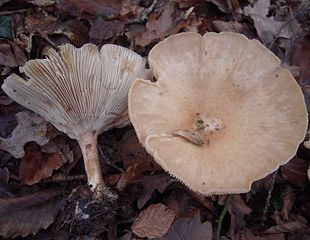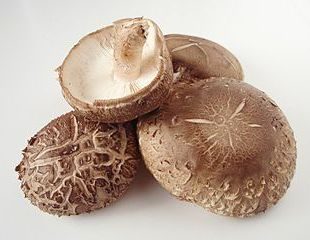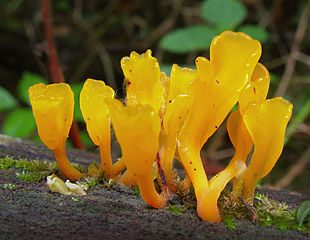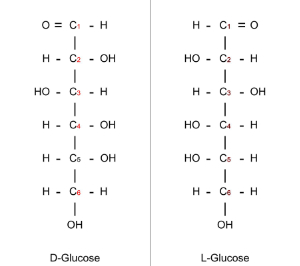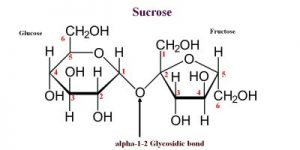Medicinal Mushrooms and Optimal Health
Mushrooms
Mushrooms are the fruiting body of fungi. It is estimated that there are 140,000 species of mushrooms but only 10% are known and named. Mushrooms represent an inexhaustible source of polysaccharides with antitumor and immuno-stimulating properties. 1
The 17 page paper by Wasser documents in great detail the benefits of mushrooms in healing.
The most visible part of mushrooms is the fruiting body that grows above the ground and releases the spores. The bulk of the mushrooms is the mycelium which is the tread-like strands that are mostly underground or growing in organic material from which the fungi obtains its nutrients.
Eating culinary mushrooms can be helpful but to obtain optimal benefits from medicinal mushrooms it is essential to consume products that are derived from not only the fruiting bodies but the mycelium.
As Wasser wrote in the journal Applied Microbiology and Biotechnology: 2
With the reluctance of a significant portion of the population to consume whole-grain cereals or foods containing gluten results in a decrease in consumption of beta glucans and dietary fibre. The majority of people (94%-95%) are unaffected by cereals containing gluten and their avoidance can result in health risks.
What is the Problem with Wheat and Gluten?
Wheat and the Distorted Views of William Davis
Impact of Gluten-free Diets
Beans are another really good source of beta glucans.
Carbohydrate Basics
What are Carbohydrates?
Before examining the health benefits of mushrooms, we will examine some carbohydrate basics and define some terms which are commonly used.
A carbohydrate is a compound that consists only of carbon, hydrogen, and oxygen. The ratio of hydrogen to oxygen atom is approximately 2 to 1, as in water. Carbohydrates contain more than 90% of the dry matter of plants. One way that carbohydrates can be grouped is into the following four categories:
- monosaccharides
- disaccharides
- oligosaccharides
- polysaccharides
Monosaccharides
Monosaccharides are carbohydrates that cannot be broken down to simpler carbohydrates. They are often referred to as simple sugars. The three most common are:
- Glucose occurs in its free form in plant tissues, fruits, honey and blood. In most natural foodstuffs glucose is present as a component of disaccharides and polysaccharides.
- Fructose is found in its free state in plant juices, fruit and honey. It is the sweetest sugar known in nature.
- Galactose does not occur in its free state in nature. It exists as a component of many poly-saccharides.
These monosaccharides all have the formula C6H12O6.
A carbonyl group (C=O) consists of an oxygen atom connected to a C atom with a double bond. If the O atom is attached to the first C atom of a monosaccharide, it is called an aldose. Glucose is an example. If the carbonyl group is attached other C atoms, it is called a ketone. In fructose, the carbonyl group is attached to the second C atom, hence it is a ketone.
D-glucose is the most abundant form of glucose and is biologically active. As a result, it is the energy source for most organisms.
L-glucose is the mirror image of D-glucose that occurs in fruits of plants. It is not biologically active and organisms cannot utilise it as their energy source.
Disaccharides are composed of two simple sugars joined together.
As well as existing in a linear form, the monosaccharides also exist as a cyclic structure which is the most prevalent form.
- Sucrose is composed of one molecule of glucose and fructose joined together. The first carbon atom of glucose is joined to the second carbon atom of fructose. Sucrose occurs widely in nature in most plants. Rich sources of sucrose include sugar cane (20% sucrose) and sugar beet (15– 20%).
- Maltose is composed of two molecules of glucose joined together. The first carbon atom of glucose is joined to the fourth carbon atom of the second glucose. Maltose is found in sprouted wheat and barley. Maltose is the major sugar in beer.
- Lactose is composed of one molecule of glucose and galactose joined together. The first carbon atom of galactose is joined to the fourth carbon atom of glucose. Lactose, or milk sugar, is the principal sugar found in milk and is unique to mammals. It forms about 40% of the total milk solids. Lactose readily undergoes bacterial fermentation: for example, the souring of milk by Streptococcus lactis by the fermentation of lactose to lactic acid.
Below is a diagram of sucrose, consisting of a glucose molecule with the oxygen at C1 and a fructose molecule with the oxygen at C2.
The oxygen atom that joins the glucose and fructose together point down (below the plane of the page) which makes it an alpha bond. If the oxygen atom points up (above the plan of the page), it is a beta bond.
This is relevant when considering alpha and beta glucans. The difference being the nature of the bonds that join glucose molecules together.
Two monosaccharides are joined together by an oxygen atom to form a disaccharide.
- Sucrose consists of glucose molecules attached to the oxygen atom by the carbon at C1 with the fructose molecule attached to the oxygen at C2.
- Maltose consists of 2 glucose molecules. The first glucose molecule is attached to the oxygen atom by the carbon at C1 with the second attached to the oxygen at C4.
- Trehalose also consists of 2 glucose molecules. Both glucose molecule is attached to the oxygen atom by the carbon at C1.
These apparently subtle changes make a big difference.
Image Credit: 3
Oligosaccharides
Oligosaccharides comprise of three to ten monosaccharides (depending upon the definition).
- Raffinose is a trisaccharide composed of galactose, fructose, and glucose. It can be found in beans, cabbage, Brussels sprouts, broccoli, asparagus, as well as other vegetables, and whole grains. Humans are lacking the enzyme to breakdown raffinose. Bacteria in the lower intestine ferment raffinose to carbon dioxide and methane leading to flatulence.
- Stachyose consists of four saccharides— two galactose and a glucose unit with a fructose unit. Stachyose is naturally found in numerous vegetables (for example, beans, soybeans) and plants. Stachyose is less sweet than sucrose and is used commercially as a sweetener. It is not completely digestible.
Polysaccharides
Polysaccharides are much larger than the oligosaccharides, containing hundreds or thousands of monosaccharide units. Some common food examples are listed below.
- Starch is composed of two structural components, amylose and amylopectin. The proportions vary depending upon the plant source varying from 20– 30% for amylose and 70– 80% for amylopectin. Both amylose and amylopectin consist of glucose. Starch occurs in stems, fruits, seeds, roots, and leaves. Starch is the predominant food reserve substance in plants and provides 70– 80% of the calories consumed by humans world-wide.
- Glycogen is composed glucose units. Carbohydrates are stored within the animal body as glycogen. It is concentrated in the liver and muscles
- Inulin is found in onion, garlic, asparagus, and bananas. The primary commercial source is chicory and Jerusalem artichoke tubers. Inulins are composed mainly of fructose units and usually have a terminal glucose. Inulin is not digested in the stomach or small intestine. It is a component of dietary fibre and has a beneficial effect by stimulating the growth of bacterial species already present in the colon. They do not raise the glucose or the insulin levels in the blood. It is used as a filler in commercially produced products.
- Cellulose is composed of very long chains of glucose units. It is a very stable polysaccharide and is not digestible by humans.
- Gums are water-soluble polysaccharides that are constituents of plant wounds.
- Mucilages are present in seaweeds, some plants, and seeds. These are soluble in hot water and cool to a gel.
- Pectic substances are abundant in citrus fruit, sugar beet, apples, and some root vegetables such as turnips. They have gelling properties and are often used in the preparation of jams.
Why Mushrooms are Healthy
Beta Glucans
Glucans are polysaccharides consisting of glucose molecules joined together. Alpha glucans have the oxygen atom pointing down, whilst beta glucans have the oxygen atom pointing up. It may not appear to be much of a difference but that is the only difference between alpha and beta glucans.
Fructans are polysaccharides consisting of multiple sucrose units. Sucrose is a disaccharide containing glucose and fructose.
The main components of the fungal cell wall are polysaccharides and glycoproteins.
Beta-glucans activate macrophages, T cells, and natural killer (NK) cells which enhances microbial and viral destruction by neutrophils and monocytes. 4
Carcinogenesis can be separated into two different stages. The initiation phase involves exposure to a mutagen that causes damage to the DNA. The second stage involves the growth of the tumour. Polysaccharide-enriched mushroom extracts can regulate cell growth and consequently inhibit tumour growth. 5
Cancer therapies such as anti-cancer drugs and radiotherapy impairs immune system response by lowering the number of white blood cells, in particular neutrophils. Beta-glucans can promote white blood cell recovery. 6
Ergothioneine
Whilst mushrooms are not an essential part of a diet, ergothioneine is. Ergothioneine is an essential amino acid that is found most abundantly in mushrooms. It is also found in kidney, liver, black and red beans and oat bran. Ergothioneine (and mushrooms) act as a powerful mitochondrial antioxidant which protects DNA from damage and is protective against a number of cancers.
Terpenoids
Terpenoids are a group of at least 40,000 compounds that represent the largest and most diverse class of chemicals produced by plants. These are found in many medicinal mushrooms as well as in the resin of pine bark and the leaves of eucalyptus, cinnamon, cloves, ginger, turmeric and mustard. 7
Some terpenoids possess anti-tumour, anti-inflammatory, antibacterial, antiviral, antimalarial effects, prevent and treat cardiovascular diseases and have hypoglycemic activities. 8
My story
I have multiple myeloma which is a blood cancer. You can read my story at About Richard Harding
Myeloma is a cancer of the plasma cells. When plasma cells become cancerous, they make abnormal antibodies, paraprotein, which are ineffective. The paraprotein result is the first result I check in my monthly pathology test.
I take shiitake, maitake, cordyceps, turkey tail, lions mane, reishi and chaga which has lowered my paraprotein. These mushrooms have also improved my liver function tests with the assistance of several Indian herbal mixtures.
Below is a useful book that describes in detail the benefits of 15 medicinal mushrooms.
Halpern, G. M. (2007) Healing Mushrooms. New York: SquareOne Publishers.
Medicinal mushrooms can be obtained in bulk for Australia, New Zealand, USA, Canada, UK, Europe, Japan and India from Superfoods Australia
The conclusion from Wasser’s paper is:
Last updated on Thursday 1 August 2024 at 09:59 by administrators
Footnotes
- Wasser, S. P. (2002) Medicinal mushrooms as a source of antitumor and immunomodulating polysaccharides. Applied Microbiology and Biotechnology. 60 (3), 258–274.
- Wasser, S. P. (2002) Medicinal mushrooms as a source of antitumor and immunomodulating polysaccharides. Applied Microbiology and Biotechnology. 60 (3), 258–274.
- Carlson, D. A. (2007) Sucrose structure formula. https://commons.wikimedia.org/wiki/File:Sucrose-inkscape.svg Rights: Creative Commons Attribution-Share Alike 3.0
- Akramien, D. et al. (2007) Effects of b-glucans on the immune system. Medicina (Kaunas). 43 (8), 10.
- Akramien, D. et al. (2007) Effects of b-glucans on the immune system. Medicina (Kaunas). 43 (8), 10.
- Akramien, D. et al. (2007) Effects of b-glucans on the immune system. Medicina (Kaunas). 43 (8), 10.
- Tholl, D. (2015) ‘Biosynthesis and Biological Functions of Terpenoids in Plants’, in Jens Schrader & Jörg Bohlmann (eds.) Biotechnology of Isoprenoids. Advances in Biochemical Engineering/Biotechnology. Cham: Springer International Publishing. pp. 63–106.
- Yang, W. et al. (2020) Advances in Pharmacological Activities of Terpenoids. Natural Product Communications. 15 (3),
- Claude, J. (2011) Clitocybe maxima ( Pig Stomach mushroom). https://en.wikipedia.org/wiki/List_of_Chinese_mushrooms_and_fungi#/media/File:Clitocybe_maxima_Ch%C3%A9mery_11.JPG Rights: CC BY-SA 3.0
- Frankenstoen (2009) Reshi Mushrooms. https://commons.wikimedia.org/wiki/File:Jreishi2.jpg Rights: Creative Commons CC0 License
- Lebrac (2012) Hericium erinaceus (Lions Mane). https://commons.wikimedia.org/wiki/File:2006-11-03_Hericium_erinaceus_crop.jpg Rights: CC BY-SA 3.0
- Batholith (2010) Shiitake. Binomial name: Lentinula edodes. https://en.wikipedia.org/wiki/List_of_Chinese_mushrooms_and_fungi#/media/File:Lentinula_edodes_20101113_c.jpg Rights: Public domain
- Molter, D. (2011) Dacryopinax spathularia (Sweet osmanthus ear). https://commons.wikimedia.org/wiki/File:Dacryopinax_spathularia_19080_cropped.jpg Rights: CC BY-SA 3.0
